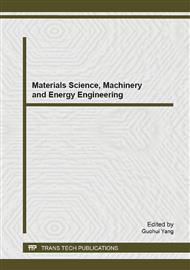[1]
M. Babescu -Maşina Sincronă -Modelare-Identificare-Simulare-, ISBN 973-625-021-0, Editura POLITEHNICA Timişoara, (2003).
Google Scholar
[2]
M. Babescu -Surse Statice de Energie Electrică, ISBN 978-973-625-427-7, Editura POLITEHNICA Timişoara, (2007).
Google Scholar
[3]
A. Bej-Turbine de vânt-ISBN 973-625-098-9, Editura POLITEHNICA Timişoara, (2003).
Google Scholar
[4]
M.C. Mabel and E. Fernandez, Estimation of Energy Yield From Wind Farms Using Artificial Neural Networks, IEEE Trans. Energy Convers., vol. 24, no. 2, pp.459-464 June, (2009).
DOI: 10.1109/tec.2008.2001458
Google Scholar
[5]
S. Fan, J.R. Liao, R. Yokoyama, L. Chen, and W. -J. Lee, Forecasting the Wind Generation Using a Two-Stage Network Based on Meteorological Information, IEEE Trans. Energy Convers., vol. 24, no. 2, pp.474-482 June, (2009).
DOI: 10.1109/tec.2008.2001457
Google Scholar
[6]
W. Qiao, R.G. Harley, and G.K. Venayagamoorthy, Coordinated Reactive Power Control of a Large Wind Farm and a STATCOM Using Heuristic Dynamic Programming, IEEE Trans. Energy Convers., vol. 24, no. 2, pp.493-503 June, (2009).
DOI: 10.1109/tec.2008.2001456
Google Scholar
[7]
J.M. Mauricio, A.E. Leon, A. Gomez-Exposito, and J.A. Solsona, An Adaptive Nonlinear Controler for DFIM-Based Wind Energy Conversion Systems, IEEE Trans. Energy Convers., vol. 23, no. 4, pp.1025-1035 December, (2008).
DOI: 10.1109/tec.2008.2001441
Google Scholar
[8]
H. Banakar and B.T. Ooi, Clustering of Wind Farms and its Sizing Impact, IEEE Trans. Energy Convers., vol. 24, no. 4, pp.935-942 December, (2009).
DOI: 10.1109/tec.2008.2001454
Google Scholar
[9]
H. Li, Z. Chen, and H. Polinder, Optimization of Multibrid Permanent-Magnet Wind Generator Systems, IEEE Trans. Energy Convers., vol. 24, no. 1, pp.82-92, March, (2009).
DOI: 10.1109/tec.2008.2005279
Google Scholar
[10]
R. Fadaeinedjad, G. Moschopoulos, and M. Moallem, The Impact of Tower Shadow, Yaw Error, and Wind Shears on Power Quality in a Wind-Diesel System, IEEE Trans. Energy Convers., vol. 24, no. 1, pp.102-111, March, (2009).
DOI: 10.1109/tec.2008.2008941
Google Scholar
[11]
A. Kusiak, H. Zheng, and Z. Song, Short-Term Prediction of Wind Farm Power: A Data Mining Approach, IEEE Trans. Energy Convers., vol. 24, no. 1, pp.125-136, March, (2009).
DOI: 10.1109/tec.2008.2006552
Google Scholar
[12]
M. Shahabi, M.R. Haghifam, M. Mohamadian, and S.A. Nabavi-Niaki, Microgrid Dynamic Performance Improvement Using a Doubly Fed Induction Wind Generator, IEEE Trans. Energy Convers., vol. 24, no. 1, pp.137-145, March, (2009).
DOI: 10.1109/tec.2008.2006556
Google Scholar


